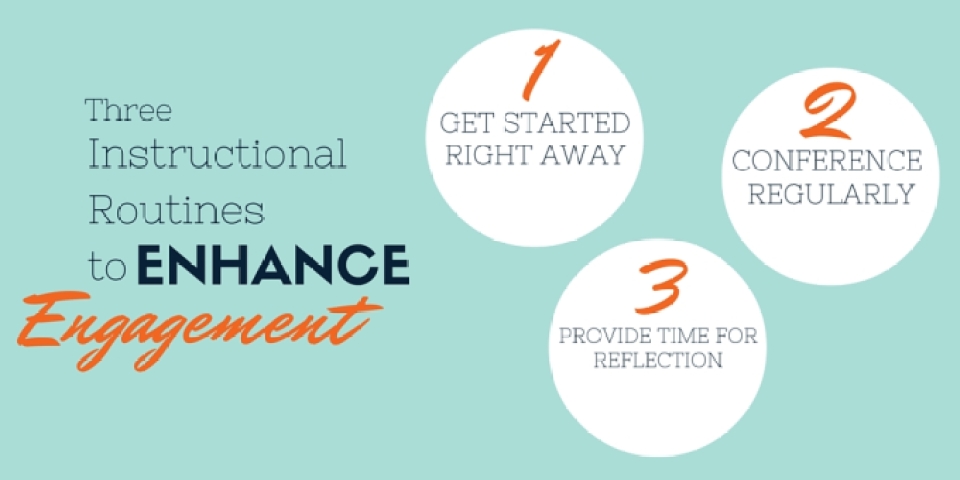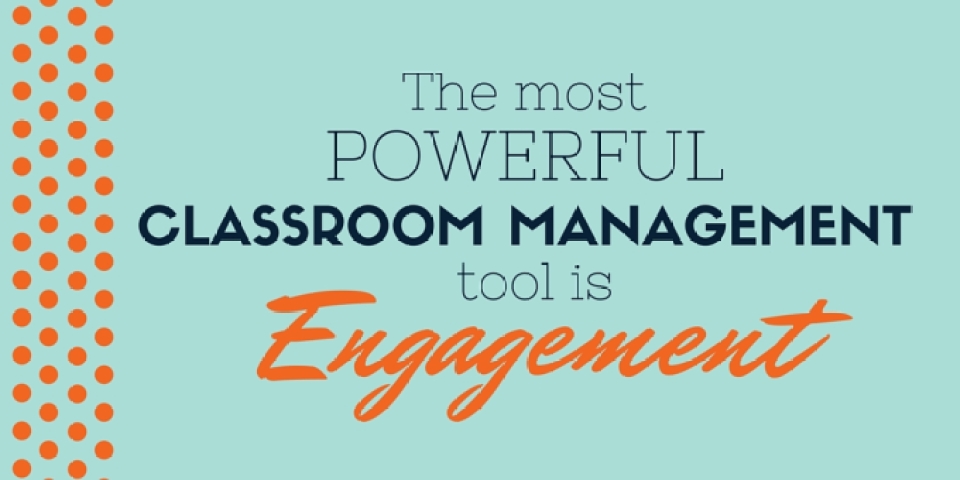3 Instructional Routines to Enhance Engagement
 Over the last three weeks I have met with many of our teachers for our year-end meetings. While these meetings are often viewed simply as compliance tasks, I was blown away by the level of reflection shared by so many of the teachers with whom I had the privilege to converse. In my on-going quest to be more mindful and reflective, I took time after each conversation to jot down some takeaways. After reviewing my notes, and also my walkthrough observations, some clear patterns emerged. Based on the work shared by teachers and observations from the year, there are three instructional routines that I have seen consistently garner high quality student results. The teachers implementing these strategies have reported fewer behavior issues and expressed less frustration with student performance throughout the year. Each of the approaches detailed below create a classroom culture where students are actively engaged in their learning experience. Great educators know that engagement is the most powerful classroom management tool.
Over the last three weeks I have met with many of our teachers for our year-end meetings. While these meetings are often viewed simply as compliance tasks, I was blown away by the level of reflection shared by so many of the teachers with whom I had the privilege to converse. In my on-going quest to be more mindful and reflective, I took time after each conversation to jot down some takeaways. After reviewing my notes, and also my walkthrough observations, some clear patterns emerged. Based on the work shared by teachers and observations from the year, there are three instructional routines that I have seen consistently garner high quality student results. The teachers implementing these strategies have reported fewer behavior issues and expressed less frustration with student performance throughout the year. Each of the approaches detailed below create a classroom culture where students are actively engaged in their learning experience. Great educators know that engagement is the most powerful classroom management tool.
While I share three individual scenarios below, these routines were observed in multiple classrooms.
Get Started Right Away
Students enter their Social Studies classroom and immediately gather with their groups and begin analyzing primary source documents. It is obvious that students previously received direction on this activity. The whiteboard in the classroom displays reminders about the task and about group norms. There is no time wasted with managerial tasks. The teacher quickly takes attendance and checks in with groups as they work. Any reminders regarding the completion of previous assignments or make up work are given individually. Students are able to get started on the day’s activity, which goes beyond completing a warm-up or bell ringer. Students are immediately engaged in the real work of the lesson.
Conference Regularly
In an 8th grade reading class, a teacher sits next to a male student. His chin rests on his hand, his face is expressionless, but his voice conveys the details of some rather complex plot events. The teacher leans toward the student to make their interest clear, but remains calm in an effort to maintain the student’s flow. Upon first observation, this scene may not seem of particular interest. However, anyone who has tried to have a text dependent conversation with a middle school student would recognize this as a precious moment. Conferencing regularly has two major impacts:
- It establishes high quality formative assessment. Meeting with a student one-on-one offers clear information about student understanding and allows for individualized feedback and follow-up.
- It builds rapport. The 8th grader mentioned above did not just show up that day ready to talk. That conversation was the product of relationship building between the teacher and the student. Think about the message sent to a student when their teacher makes it a point to speak to them regularly, one-on-one. The care is evident.
Provide Time For Reflection
Students in a science class spend five minutes at the end of the class period writing about how their ideas of the solar system changed during the course of their lesson. A few students chuckle at their previous misconceptions. The teacher moves around the room and provides specific feedback to students related to their reflections. The teacher pauses longer with one student, who seems to be struggling to get their thoughts on the paper. The teacher asks more specific questions and helps the student craft a response. We often do not spend enough time thinking about our thinking. We receive so much new information every day, and we are typically not deliberate in processing how that information has changed us. Reflection allows us to solidify our understandings, document our wonderings, and establish our beliefs. Providing this time for students not only assists with the acquisition of course content, it establishes a high quality practice which will continue to serve our students long after they leave our schools.
Allowing students to immediately dig into their work, establishing one-on-one time with each student, and providing time for student reflection are instructional routines sure to enhance learning in your classroom. What other instructional routines do you use to consistently engage your learners?



